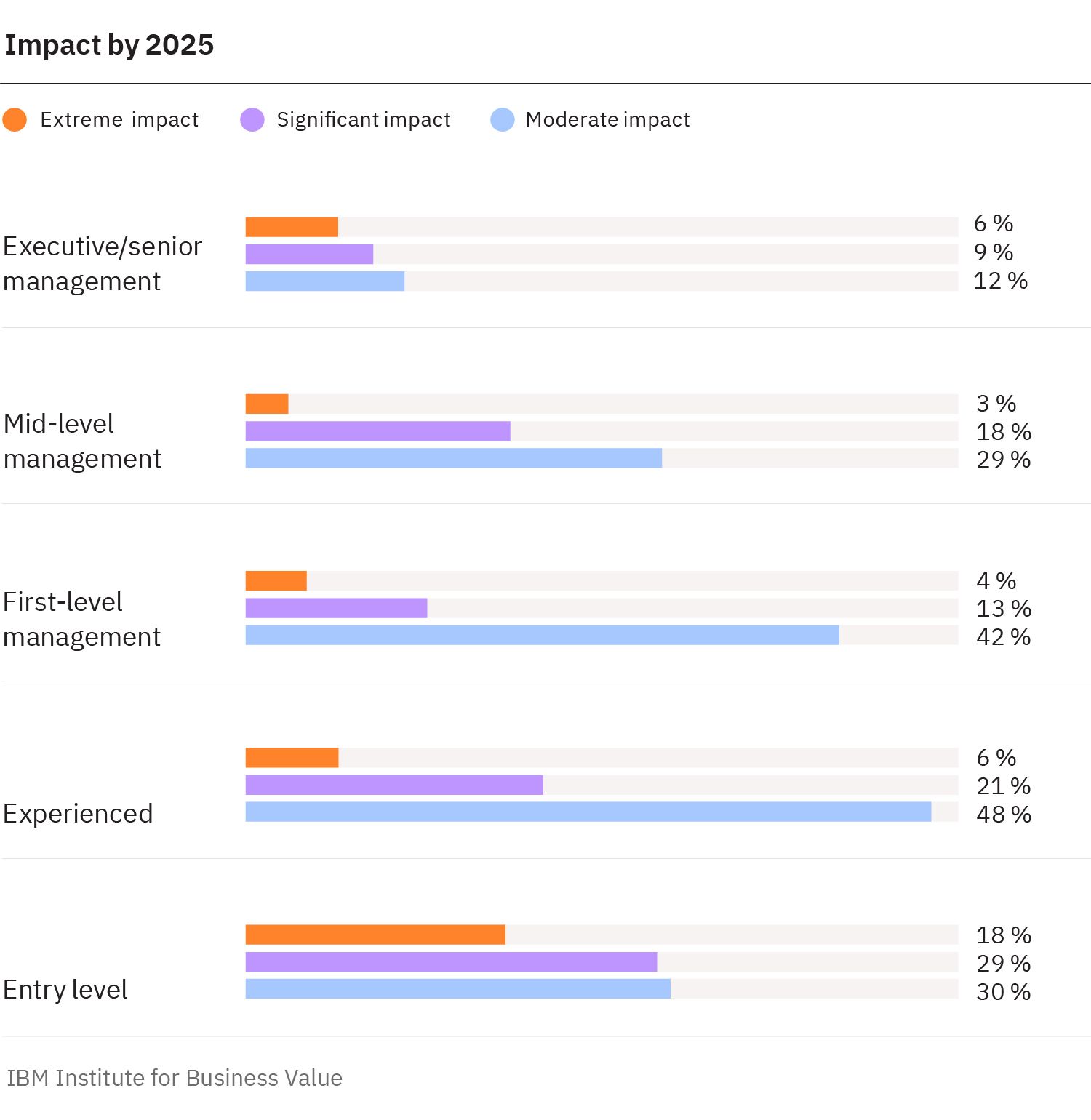In the era of Artificial Intelligence, any human being with a smartphone and proper Internet connection can make his or her day-to-day life simpler. Any doubt which springs up in an individual, Artificial Intelligence is clearing it in an organised manner. Or if any work one has to performed, AI performs it with speed and efficiency.
The boom in the consumption of AI assistance has inspired tech giants to build their own AI programs into their products, with the most recent example being Microsoft introducing an AI feature in Microsoft Word. Many AI models,, despite being in their early stages, are performing an enduring number
As artificial intelligence (AI) ups its IQ, executives are grappling with the implications for the enterprise. Rapid advancements in AI, such as the stratospheric rise of ChatGPT, promise to upend traditional business models—and transform the future of work.
In response, some business leaders are rushing to reorganize and reskill, elevating new skills and specialties while deprioritizing those that have become obsolete. Others are focused on hiring, stocking up on next-gen talent to address skills shortages. But these short-term tactics don’t address the bigger issue on the horizon: many of the jobs people are doing today won’t be needed in the enterprise of tomorrow.
AI is ushering in the age of the augmented workforce—when human-machine partnerships deliver exponential business value.
AI and intelligent automation are creating a new division of labor between human workers and machines. The World Economic Forum (WEF) predicts new technologies will disrupt 85 million jobs globally between 2020 and 2025—and create 97 million new job roles. This radical shift is ushering in a new age. We call it the age of the augmented workforce—an era when human-machine partnerships boost productivity and deliver exponential business value.
Yet, this evolution is also widening the global skills gap. The WEF predicts that 44% of workers’ skills will be disrupted between 2023 and 2028—up nine percentage points from its last five-year projection. Generative AI could push that figure even higher. A recent IBM Institute for Business Value (IBM IBV) survey found that 4 in 5 executives say generative AI will change employee roles and skills. While workers at all levels will feel the effects of generative AI, lower-level employees are expected to see the biggest shift.
Execs expect generative AI to have the greatest impact on next-gen employees.

Becoming the enterprise of tomorrow
As AI continues to evolve, its effects will likely intensify for stakeholders across the board, including at the managerial and executive ranks. No level is immune to the impact. This will force executives to rethink job roles, skill sets, and how work gets done.
What does that look like, and how should business leaders respond? To answer these questions, we conducted two extensive new studies—one with 3,000 global C-suite leaders across 28 countries, another with 21,000 workers across 22 countries.
We found that business success is often driven by a shift in perspective. In the era of the augmented workforce, executives from top-performing organizations are evolving the operating model to reflect new ways of working fueled by technological advancements.
Organizations that view the operating model as the ultimate driver of enterprise transformation outperform in profitability, revenue growth, innovation, and employee retention.
Organizations that have revamped their operating model have outperformed their peers by deploying AI technologies at the core. Over the past three years, organizations that view the operating model as the ultimate driver of enterprise transformation have outperformed in profitability, revenue growth, innovation, and employee retention. Overall, this group outperforms their competition 44% more frequently than the group focused on skills, which performs the worst.
Rather than simply bolting innovations onto an outdated model, these organizations are breaking the business down to its most essential elements. But many others have yet to do the hard work. They’re choosing to automate the same activities they’ve always done, rather than going back to the drawing board to find a better way forward.
While small changes may increase efficiency, automating and optimizing bad business processes won’t make them better. Instead of simply retrofitting automation to fit existing workflows and complete repetitive tasks, executives must strip operating models down to the studs to deliver real productivity gains and create a more engaging work environment.
Automating bad processes won’t make them better. Break the business down to its essential elements to deliver real productivity gains.
Based on our research and experience in the field, we’ve outlined a framework that helps executives lead the augmented workforce through a time of change. We’ve identified three key priorities that can help them elevate employees and gain a competitive edge:
– Transform traditional processes, job roles, and organizational structures to boost productivity and enable business and operating models that reflect the new nature of work.
– Build human-machine partnerships that enhance value creation, problem-solving, decision-making, and employee engagement.
– Invest in technology that lets people focus on less time-consuming, higher value tasks and drives revenue growth.
Doing the hard work of talent transformation today promises to make work easier for your people tomorrow. Download the report to learn how AI and automation can help elevate employees—making the most of high-quality human capabilities—and deliver a competitive advantage for the long term.
https://www.ibm.com/thought-leadership/institute-business-value/en-us/report/augmented-workforce
https://www.thehindu.com/opinion/open-page/ai-driven-world/article67249230.ece/amp/





